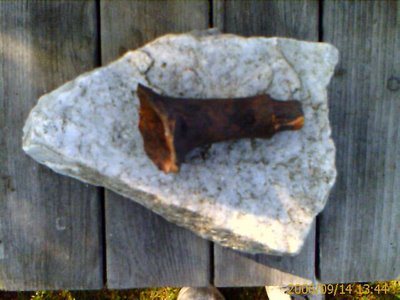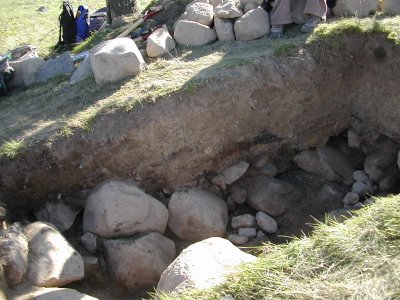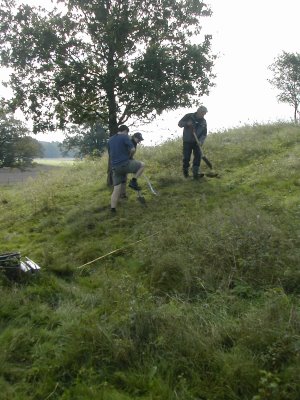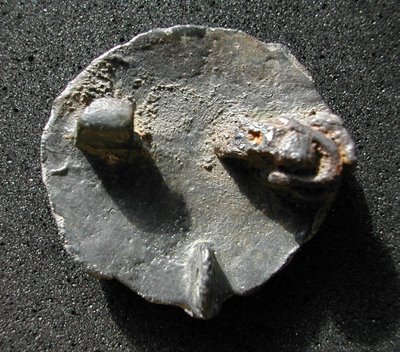 Archaeological Fantasies
Archaeological Fantasies is an anthology of skeptical writings on pseudoscientific archaeology and post-modernism. The book project grew out of discussions on the on-line skeptical archaeology forum
The Hall of Ma'at. The volume's editor, Roman archaeologist Garrett G. Fagan of Penn State University, is a long-time participant on such forums. He has thus made himself available to believers in pseudoarchaeology in a far more direct way than most academics ever do.
All the volume's thirteen papers are interesting and make good reading, at least if one is a skeptical rationalist like myself. Two are, however, not directly relevant to the book's main theme.
David Webster's contribution treats the rather strange view of Maya culture championed by pioneers of this archaeological field of research. Scholars such as J.E.S. Thompson and Sylvanus Morley made the Classic Maya out to have been unlike all other known state societies in many respects, insisting for example that the Maya had been peaceful empire builders. Their model has now been discarded, largely thanks to the decoding of the Maya script. But this is not in fact a case of pseudoscience. It was a new field with few practitioners of whom several lacked formal archaeological training, where individual contributors could maintain great personal influence for decades. Once the field became academically established and its ranks grew, the scientific process of critical re-evaluation made short work of poorly founded early interpretations, while keeping such that bore renewed scrutiny.
Another good paper that is somewhat out of place is Alan D. Sokal's long
contribution on the relationship between pseudoscience and post-modernism. Most of his examples are taken from academic writers in nursing and Hindu nationalist scholars. Archaeology hardly gets a mention. As Sokal points out to start with, pseudoscience and post-modernism have very different goals. Pseudoscience claims to know the truth better that established science. Postmodernism claims that no objective truth can be known by anyone. And Sokal does not indeed find very much contact between the two movements. Pseudoscientists only rarely use postmodernist arguments, and then as a last line of defence when their claims have been soundly refuted. And academic post-modernists only rarely endorse pseudoscience, and then as part of their general distaste for rationalist science. They are far more respectful toward traditional superstitions held in the Third World than toward the ideas of Western UFO theorists.
Good general papers on pseudoarchaeology in tones varying from the measured to the pugilistic are offered by Peter Kosso, Garrett G. Fagan, Nic Flemming and Norman Levitt. Kenneth L. Feder presents the results of a series of questionnaires on pseudoarchaeology given to his students over a period of 20 years. Concludes Feder, "[S]tudents do not appear to be descending into a swirling vortex of pseudoscientific beliefs about the human past. Rather, they seem to be aware of and interested in claims about ancient astronauts […] and the like, but the majority simply are not intellectually or emotionally committed to such notions."
Katherine Reece's paper describes her intellectual journey from fringe archaeology buff to keeper of the aforementioned skeptical
website about pseudoarchaeology. Growing up in the rural mid-West, she happened upon von Däniken long before any good pop-sci archaeology reached her. What finally expanded her horizons and won her over to the rationalist camp was the internet. There's a lot of junk there, but a lot of real archaeology too.
TV producer Christopher Hale describes the many woes of making a good documentary on pseudoarchaeology in an age when viewer ratings rule television and von Däniken's successors have enormous irate fan bases at their disposal.
The book offers four concrete case studies of pseudoarchaeology. Paul Jordan's is aptly named "Esoteric Egypt" and deals largely with pyramidiocy. Bettina Arnold looks briefly at archaeological aspects of the racial mysticism cultivated in Nazi Germany and among Celtic nationalists. I was intrigued to learn about Himmler's short-lived neo-pagan
Thing-movement of 1933-1935, that involved the construction of twelve dedicated open-air amphitheatres. It's a Nazi culture type site! One was cut into the remains of a pre-Roman oppidum near Heidelberg.
Mary Lefkowitz chronicles the tragicomical fight over civilisatory primacy between Afrocentrists (such as Martin Bernal, author of
Black Athena) and Hellenocentrists. After the Afrocentrists had asserted that ancient Greek civilisation was rooted in the Egyptian (i.e. African) one, Hellenocentrists responded with claims that the world's first pyramids had been built in Greece, the idea then radiating around the world. There aren't actually any pyramids in Greece, but there is a rare type of rural defence tower of the mid-1st Millennium BC. The ground story of these unassuming little structures have inward-tilted walls, so in cases where that story is all that remains, one may imagine that the building was once pyramidal in shape – if one really wants to. Shaky dates around 3000 BC were offered for these Hellenic proto-pyramids.
Nationalistic pseudoscience like this is never a pretty sight, and the book's most disquieting contribution is Michael Witzel's paper on Hindu nationalism and pseudoscience. The
hindutva movement throws itself blindly into the exact same combination of pseudoscience and hyper-relativism that flourished in pre-war Germany, with the exception (so far) of ideas about racial purity. Thus university departments in "Vedic Astrology" and the 1992 demolishment of the
Babri mosque in Ayodhya. Thus any number of batty claims about the Vedas prefiguring quantum mechanics and the Indo-Aryans coming
out of India to bring light to the world. At the root of it all is the post-colonial situation where chauvinists fortified by "post-colonial theory" cultivate an anti-European and antiscientific
Dolchstosslegende for free India.
This book (with its detailed index) will have a place on anyone's bookshelf who is interested in archaeology, science outreach, and the refutation of spurious claims and destructive relativism. To a Scandinavian archaeologist like myself, it offers refreshingly post-post-modernist perspectives. Hardly touching upon temperate Europe, the contributors clearly do not see the British archaeological theorists who have generated so much turgid verbiage from the late 1960s onward as relevant to the discussion. Here, archaeology is simply science: not in the sense that it should be just like the natural sciences, but meaning that all inquiry into what the world is and has been like must proceed rationally and cautiously if any real knowledge is to be gained. Would that it were so in Scandinavian archaeology too.
Fagan, Garrett G. (ed.). 2006.
Archaeological Fantasies. How pseudoarchaeology misrepresents the past and misleads the public. Routledge. ISBN 0415305934.
[More blog entries about archaeology, postmodernism, skepticism, rationalism, books; arkeologi, skepsis, skepticism, pseudovetenskap, postmodernism, rationalism, böcker.]
 I agreed to a really crappy business deal today.
I agreed to a really crappy business deal today.














































